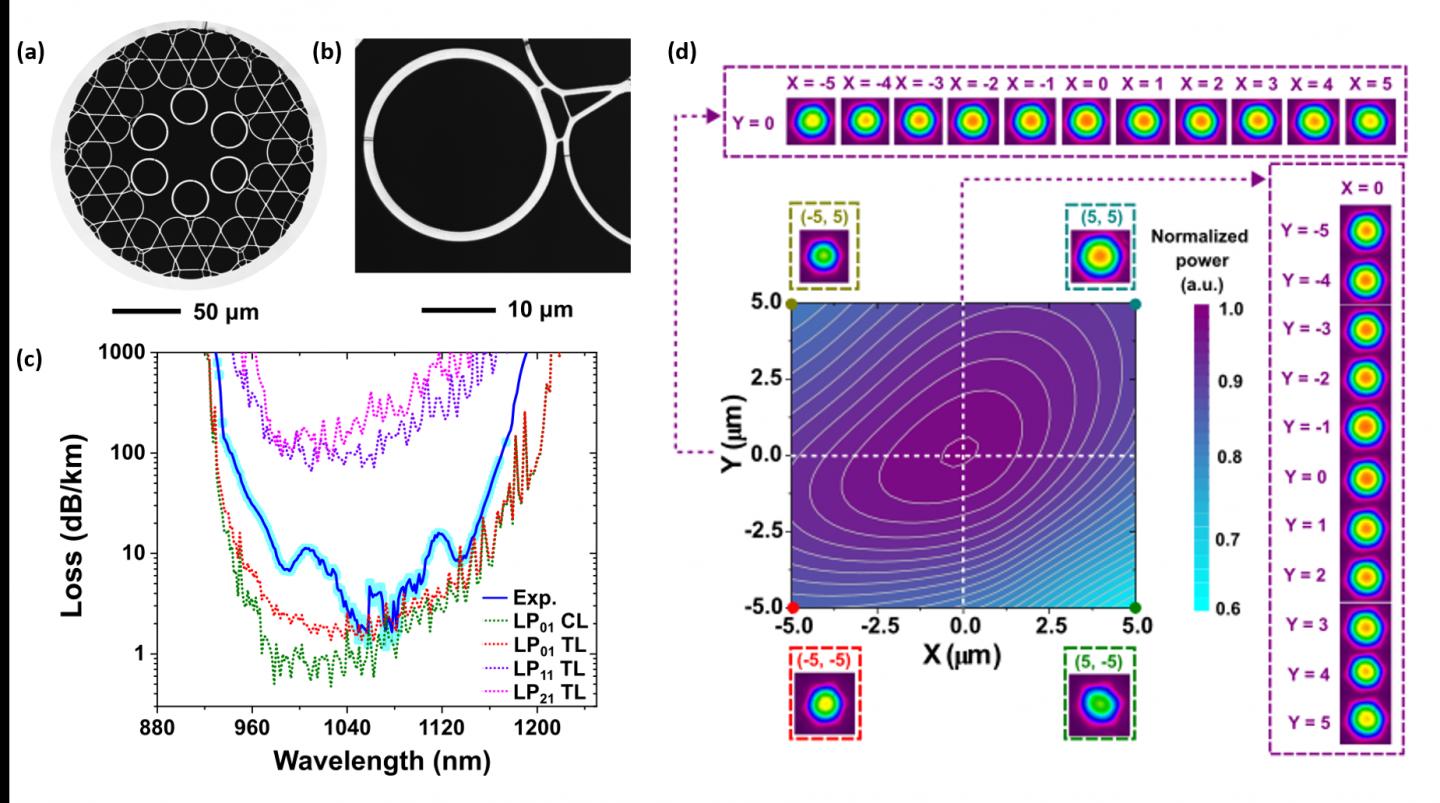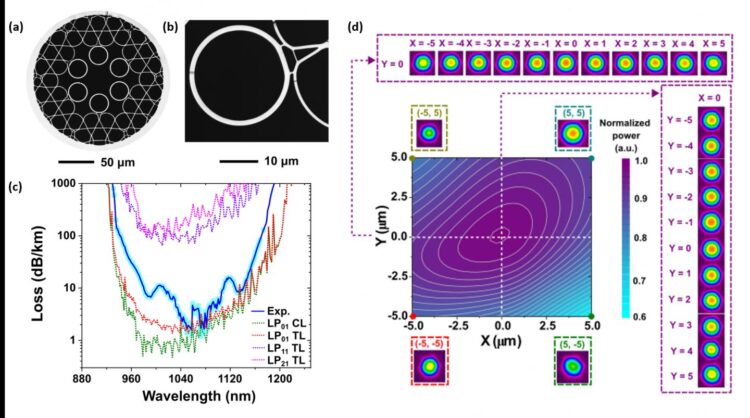
Credit: by Foued Amrani, Jonas H. Osório, Frédéric Delahaye, Fabio Giovanardi, Luca Vincetti, Benoît Debord, Frédéric Gérôme, Fetah Benabid…
Recent spotlights on IC-HCPCFs are due to the recently demonstrated outstanding ultralow-loss performances and their application capabilities. Nevertheless, while their attenuation achieves impressive figures, the challenge of accomplishing a low loss, single-mode (SM), and polarization-maintaining HCPCF perseveres.
In a new paper published in Light: Science & Applications, a team of scientists, led by Professor Fetah Benabid from the University of Limoges, France, and in collaboration of the University of Modena, Italy and the company GLOphotonics, proposed and fabricated a new IC-HCPCF, the hybrid Kagome-tubular lattice (HKT) HCPCF, which combines effective single-mode operation and ultralow loss. The cladding of the HKT HCPCF exhibits an inner cladding made of six untouching tubes and a Kagome outer cladding, which are linked by thin connecting tubes. The inner cladding guarantees an effective single-mode operation by providing coupling between the LP11-like modes guided in the core (usually the foremost contaminating higher-order modes to the fiber modal content) to the fundamental mode of the cladding tubes. In turn, the Kagome outer cladding significantly reduces the confinement loss.
“We endeavored to fabricate such a fiber and experimentally achieved a minimum transmission loss of 1.6 dB/km at 1050 nm. Moreover, we assessed the fiber modal content and attained a record high-order modes extinction ratio of 47 dB in a 10 m-long fiber,” the researchers explain.
“The fiber single-mode operation is remarkably robust. We tested the fiber under motion and inspected the fiber modal content while misaligning the input coupling beam. We observed higher-order modes extinction ratios as high as 24.7 dB even when the coupling beam was severely misaligned (input beam shifted by 10 μm from its optimum position).”
Additionally, Prof. Benabid forecasts that “further improvements on the experimental fiber structure, such as having better control on the shapes and sizes of the connecting tubes between the tubular and Kagome lattices, are expected to entail loss reduction by more than one order of magnitude.”
“In the manuscript, we delved into the fiber design rationale and extensively studied the effect of associating two IC claddings in the new HKT HCPCF. Indeed, the IC principles apprise the main design elements which allow attaining ultralow loss and tailoring the fiber properties for specific applications. Additionally, they inform the great freedom in designing HCPCFs and make us confident that, by judicious choice of the cladding structure and by ingenious fabrication methods, this fiber will be elected as protagonist of the next transformative developments in HCPCF technology”, says Prof. Benabid.
###
Media Contact
Fetah Benabid
[email protected]
Related Journal Article
http://dx.





